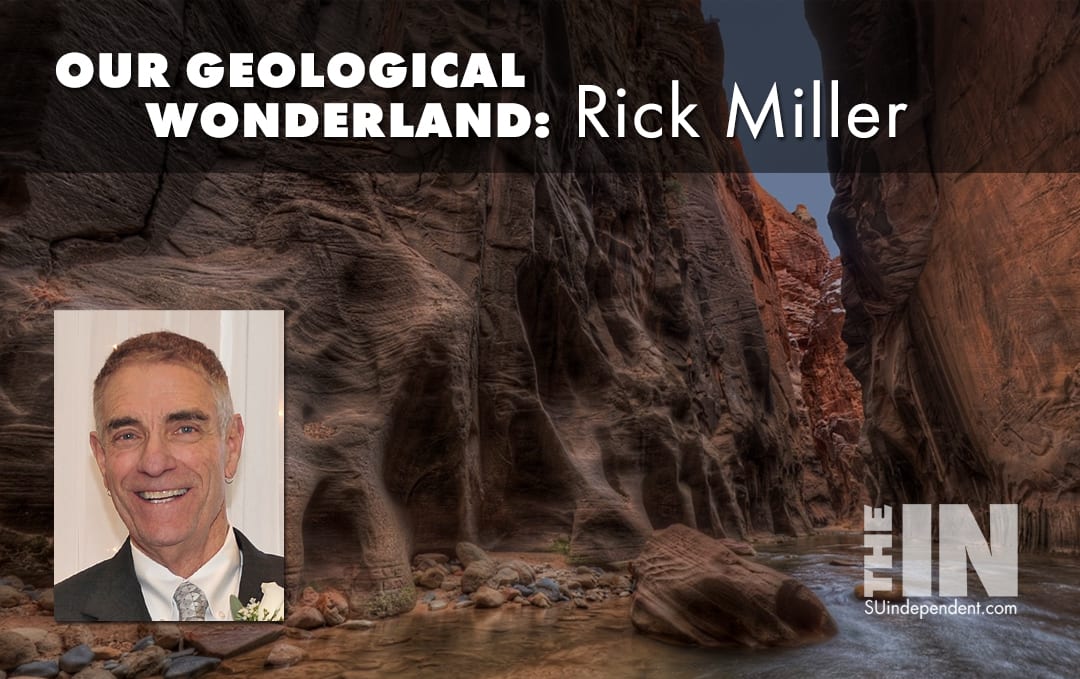
Geology Made Utah and America Great
By Rick Miller
Introduction
As noted in Part 1, the geological occurrences of large scale iron ore deposits in the Great Lakes region and the occurrence of large scale coal deposits in the Appalachian region basically kick-started the industrial development and manufacturing within the United States beginning in the 1850s. Although occasional downturns occurred, such as during recessions and the Great Depression of the 1930s, this massive growth continued well into the last half of the 20th century.
Various other discovered natural resources and building of various transportation infrastructures also played a role in this nationwide development. Utah has played a role in this development. First, as the location of the completion of the First Transcontinental Railroad and second as the discovery of uranium in southern Utah created a “uranium rush” in the 1950s (Figure 1).

Infrastructure: Transcontinental Railroad, Communication Systems and Interstate Highways
A significant event related to the discovery of gold in California and the developing industrialization of the upper Midwest and Great Lakes regions was a proposal to link these regions by railroad. Construction of the First Transcontinental Railroad began in 1863. The western terminus would be Sacramento, California and the eastern terminus would be Omaha, Nebraska. The western portion was financed primarily by money from gold discoveries. This railroad was completed in 1869. Within 20 years the US had over 163,000 miles of track (Figure 2).
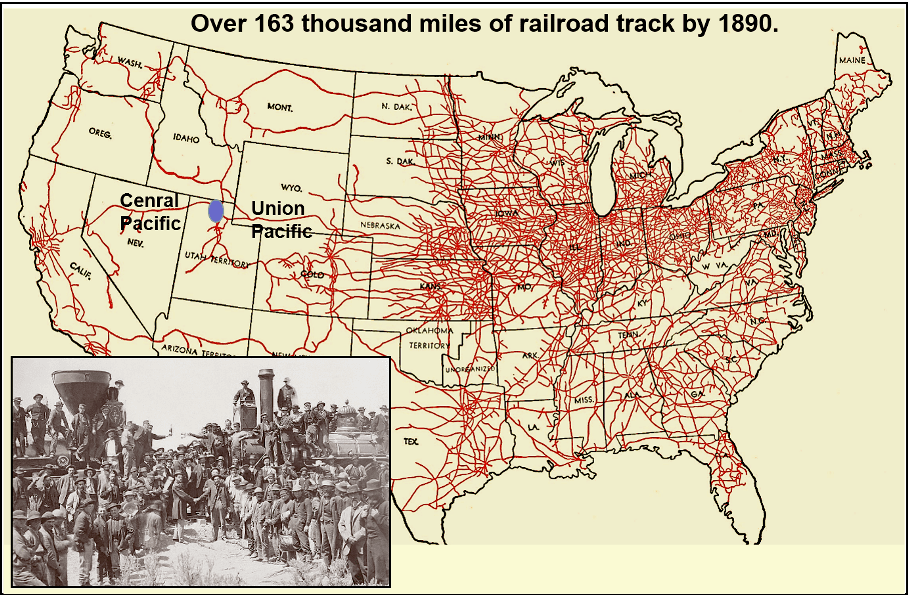
Completion of the transcontinental railroad allowed for easier travel across the United States. In turn that brought more people to Utah territory. Because of this population growth, Utah became the 45th state in 1896.
Along with this railroad infrastructure, a method of communication was needed. The US Mail System was far too slow to accomplish. A telegraph system first invented in Europe was developed in the United States beginning in the mid-1800s and rapidly expanded as the country grew. In the 1900s, telephone systems and the computer systems were developed, and communication is now virtually instantaneous.
In the early part of the 20th century, increasing production of automobiles and then trucks provided the impetus for developing paved roads and highways. This culminated with the proposal to establish an interstate highway system to facilitate the transportation of people and products as well as provide increased domestic security. The system was signed into law in 1956 under President Dwight D. Eisenhower and was basically completed by 1992 (Figure 3).
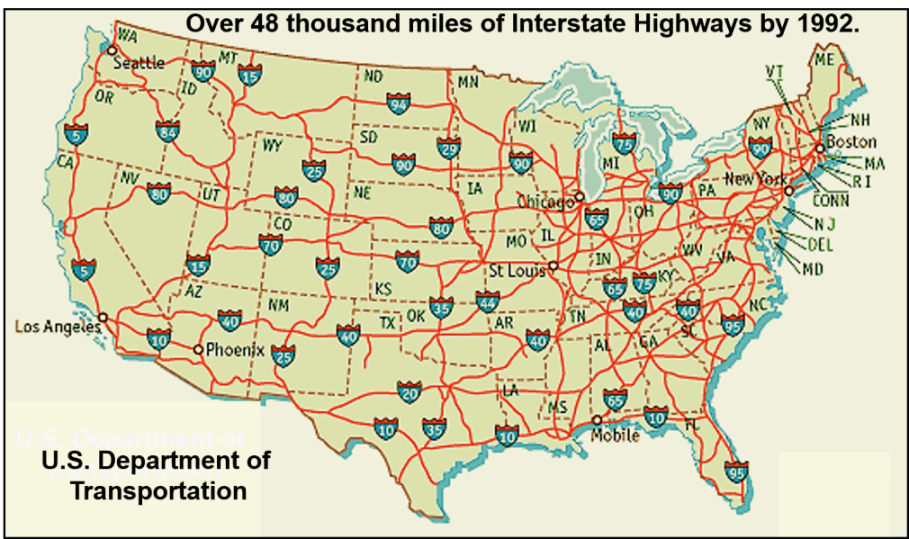
Uranium
Uranium is a rare element, has an atomic number of 92 and a symbol of U in the periodic table. There are three different types of Uranium, termed isotopes, and they are distinguished from one another by having different numbers of protons in their nucleus (U238; U235 and U234). U238 is by far the most common and represents about 99 percent of all uranium.
The presence of uranium isotopes, which undergo radioactive decay into lead has been used by geologists to determine the numerical age of igneous and metamorphic rocks including meteorites. This radiometric age-dating technique has been used since the early 1900s and has become much more accurate since the 1950s with the development of more precision instrumentation.
Although known for a long time, uranium was considered a waste product in the mining of vanadium. This situation changed during World War II, with the development of nuclear bombs and then the use of uranium decay (fission reaction) in power generating plants.
During what became a nuclear bomb building frenzy in the late 1940s and early 1950s the US Atomic Energy Commission offered a bonus to anyone who discovered significant deposits of uranium in the United States. In 1952 such deposits of uranium were discovered by Charles Steen who at that time was an unemployed geologist. He found mineable uranium ore deposits in sedimentary rocks of the Chinle Formation near the town of Moab in southeastern Utah.
Thus, in the early 1950s, the southeastern portion of Utah became a pivotal location for Uranium mining in the United States. So, about 100 years after the California Gold Rush of 1848-1849, the Moab area of the Colorado Plateau in Utah became the site of a “uranium rush” (Figure 4).
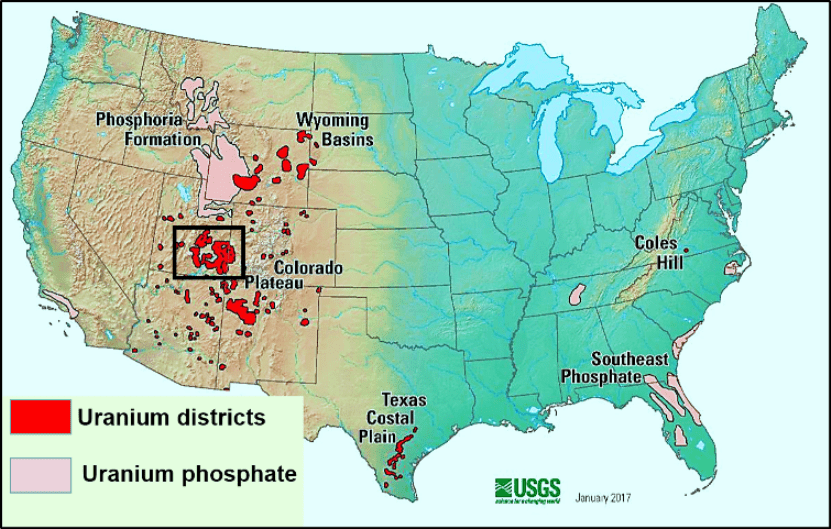
Within a few years of Steen’s initial discovery over 800 Uranium mines were located on the Colorado Plateau. However, by the mid-1960s the demand dropped as the government had accumulated large reserves. By the early 1970s, Uranium mining in Utah had come to a halt, although there are still substantial reserves in the subsurface in this region. One negative legacy of this mining is the location of mine tailings such as the one near Moab, Utah which is located very close to the Colorado River (Figure 5).
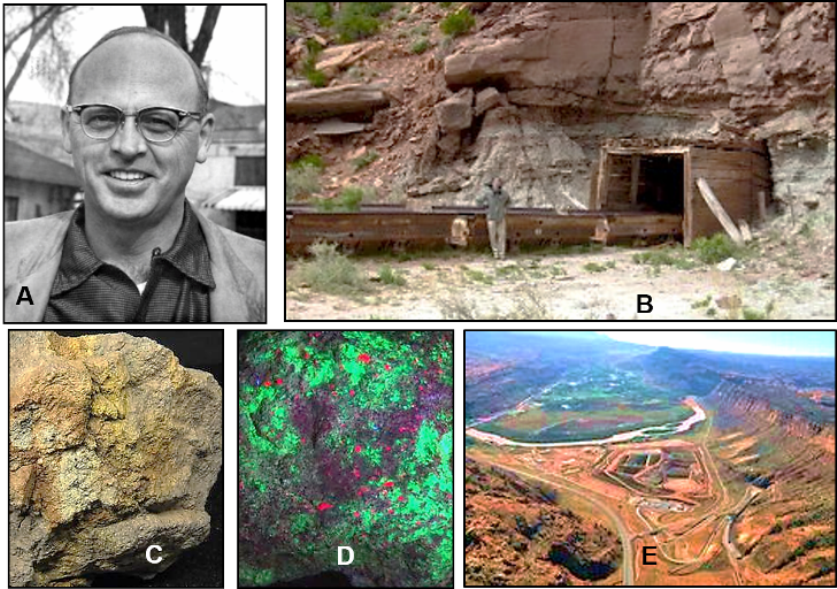
Final Comments
Economically valuable natural resources such as petroleum, gold, uranium, and others result from geologic activities such as igneous activity and plate tectonic movements. Resources described in this and a previous article have generated very large sums of money and have played an important role in the development of the United States as an industrial power.
A summary of these natural resources indicates that the initial chemical composition of our forming planet provided the initial source for mineral resources. Since Earth’s formation, these minerals have been moved and sometimes altered by various processes on the surface and within the interior. This ongoing process has occasionally formed them into what is considered economically valuable concentrations.
Along with the discovery and exploitation of these resources, the major development of transportation and communication systems were required. The United States became a world industrial power due to the fortuitous occurrence of geologic events over a few billion years and the ability of individuals and companies to find and develop these resources.
Viewpoints and perspectives expressed throughout The Independent are those of the individual contributors. They do not necessarily reflect those held by the staff of The Independent or our advertising sponsors. Your comments, rebuttals, and contributions are welcome in accordance with our Terms of Service. Please be respectful and abide by our Community Rules. If you have privacy concerns you can view our Privacy Policy here. Thank you!
Click here to submit an article, guest opinion piece, or a Letter to the Editor




